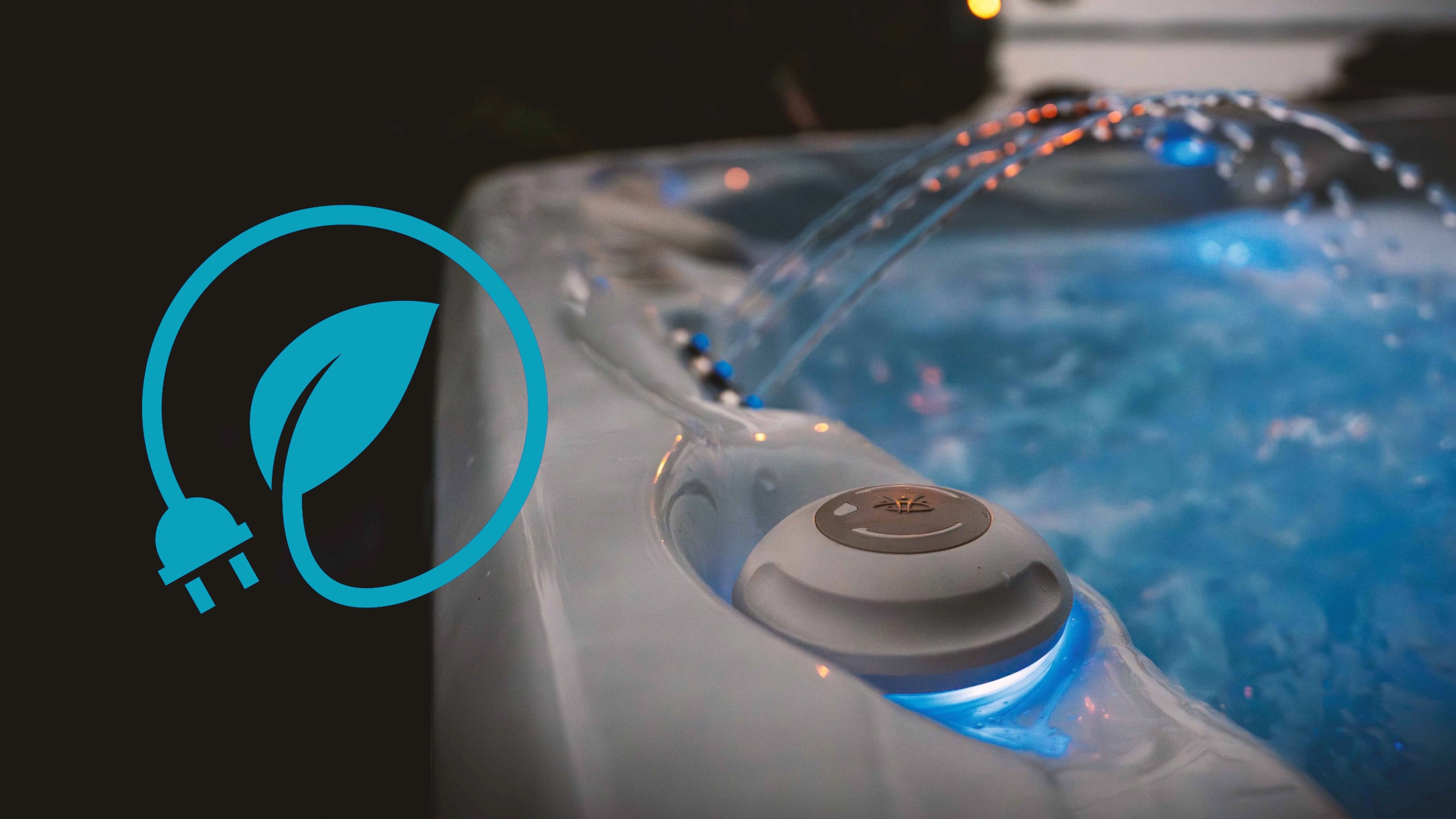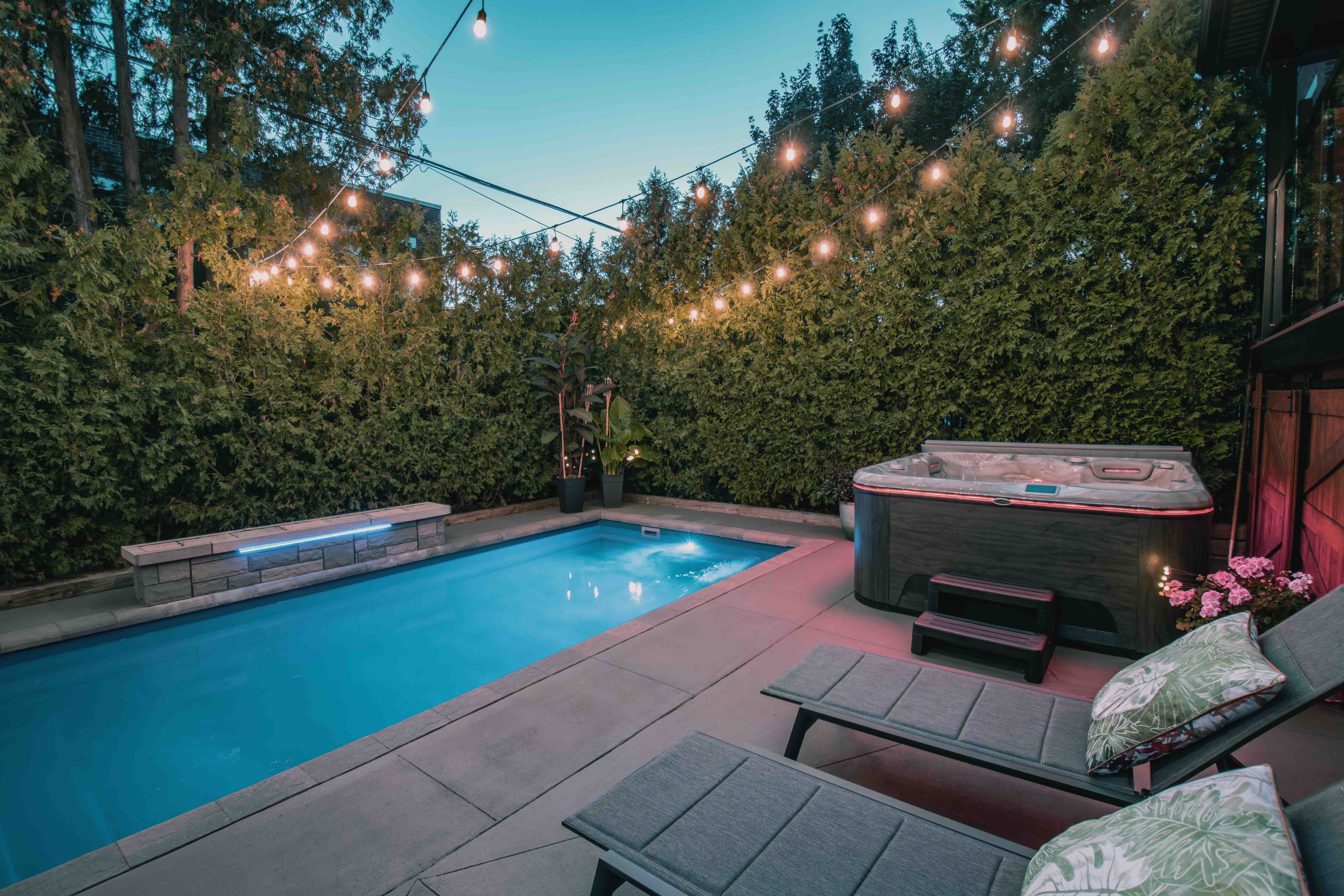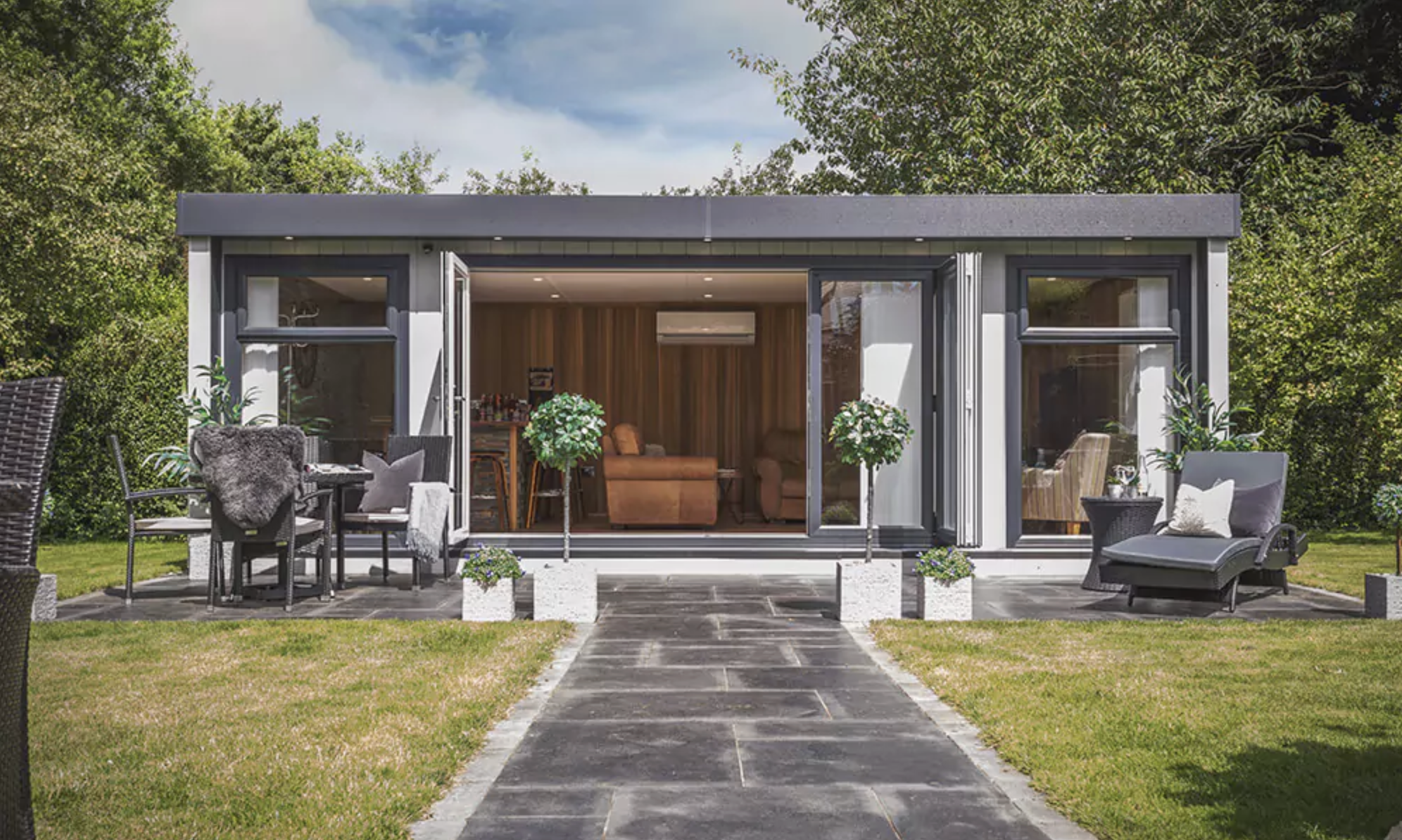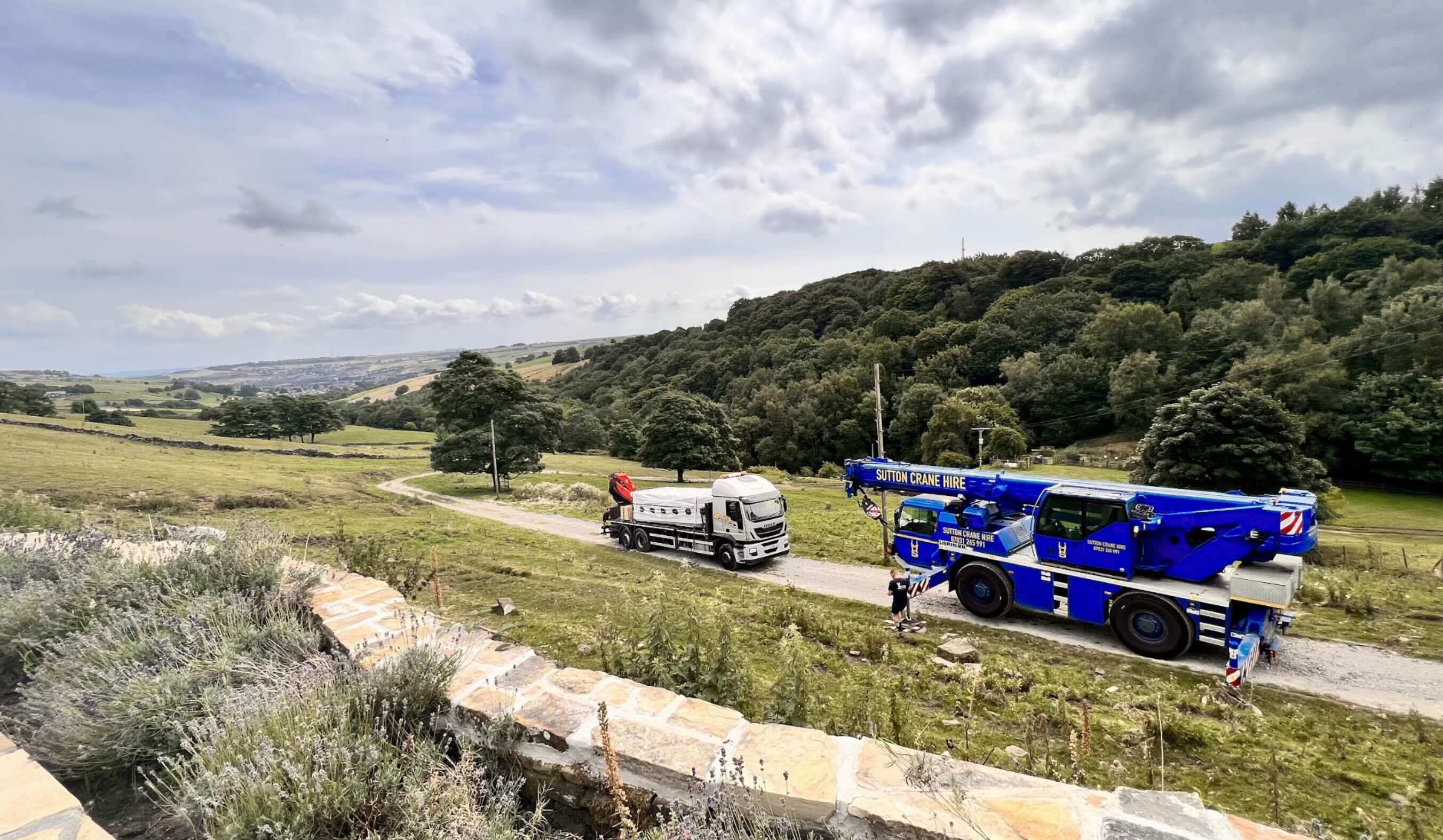July 27, 2025

View Posts By Topics
- Hot Tubs (42)
- Swim Spas (34)
- Maintenance (23)
- Hydrotherapy (12)
- purchase advice (12)
- Fitness (11)
- BBQ Cabins (10)
- Tips & Tricks (10)
- Troubleshooting (10)
- Water Chemistry (10)
- Garden Design (9)
- Garden Buildings (6)
- Hospitality (6)
- Hydropool Exclusive (4)
- Recipes (4)
- Science (4)
- Party Planning (3)
- Finance (1)
Are you ready to relax without the soaring energy bills? We've got the lowdown on how to reduce your hot tub’s energy consumption. From learning about integral insulation, to dialling in the perfect temperature, get ready to soak smarter with our informative deep dive that looks at hot tub energy saving strategies. Enjoy bubbly bliss without feeling the pinch.
How to Keep Energy Costs Low With A Hot Tub
First of all, you want to make sure your insulation is great. If your hot tub has no insulation at all, you're going to be wasting so much energy (money) to keep it heated. Lock in that heat! Most premium hot tub brands have insulation. If your cabinet emits a lot of heat, you may consider adding an additional layer of insulation, you can get rolls of foil insulation at any hardware store.
If you have an inflatable hot tub and you are looking to decrease energy consumption, wrapping the outside may help. A warning would be to try and keep any electrical components out of the wrap, as these tubs aren’t built to handle heat retention and pumps may burn out.
Hydropool hot tubs use a combination of insulation methods, but work to use the excess heat produced by electrical components. Our pipework is black, to absorb that heat. We use perimeter insulation as well as light spray foam. This avoidance of full foam insulation by Hydropool prevents excess work (cost) when diagnosing leaks. Read more about our use of insulation in our blog post. There you will find actual infrared comparisons to other makes and models, which show why we are so confident in Hydropool’s method.

The Secret to an Energy-Efficient and Affordable Hot Tub
The secret is in your hot tub cover. A high quality cover will do so much work in keeping the heat in. If you aren’t using a hot tub cover, well your heat and water are just escaping into the atmosphere- along with your hard earned pounds.
You also want to keep your cover in good condition. Patch it up if it gets any tears to prevent waterlogging. Make sure the fit is tight to lock in all the heat. Learn more about how to keep your cover in tip top shape by reading our blog about hot tub cover care.
A new trend emerging in hot tub care and keeping is hot tub cover caps. These have cropped up as a result of the rise in popularity of inflatable hot tubs. Don’t confuse these with hot tub covers! These are created to go over the top of the hot tub cover. Think of it as a shower cap for your hot tub cover. These are used more to prevent wear and tear, but in some cases can be used for heat retention. I would say a hot tub cover cap is a “go the extra mile” purchase, not a necessity.
Something else that could be helpful but isn’t a necessity would be trying to prevent wind from whisking your heat away. With a properly insulted hot tub like one from Hydropool or other hard-standing brands, you shouldn’t need to worry about wind at all. But if you do have an inflatable or a hot tub with no insulation, wind chill may be a detrimental factor. Have you ever slept on an air mattress while camping? The cold ground just leaches into the air of the mattress and can freeze you solid! The same can be said for inflatable hot tubs or an empty cavity within the shell of a poorly made hot tub. So consider wind breaks in the form of fences, plants, or even hot tub shelters to prevent the wind from sucking away your heat and money as a result of pumps working overtime.

Soak Smarter In Your Hot Tub
So far we’ve covered insulation and hot tubs as the “must haves” in terms of saving on hot tub energy costs. The better these two things are, the more money you will save. Let’s now talk about how you can tweak your run times and temperature settings to lose a couple quid of the energy bill.
This may take some experimentation to find what keeps you comfortable and saves money. It will be a great use of time if it ends up saving you in the long run!
Hydropool’s Signature Self-Cleaning model is already very efficient with its cleaning cycle, it only takes 15 minutes to run through said cycle. Straight off the bat, your Hydropool could be running that cleaning cycle many times throughout the day. You can set up exactly how many times you would like it to run per day in the settings. Or just use one of the pre-programmed settings. Our Serenity range also has customisable cycles, and an eco mode. The reasoning behind this for saving money would be that when your pumps are running, you are using energy. But you do want to make sure the water is being cleaned, as letting it go stagnant will only cause problems with pumps and mean you’ll have unsafe water. To be sure your water is being adequately cleaned, run your filter system for at least one hour, twice per day. Running it for too long is really just a waste of energy and your money. If your hot tub model doesn’t have a setting for this, set a timer to turn your hot tub on and off.
To save even more, lower the high-temperature setting on your spa. The maximum safe temperature for a hot tub is 40°C. Often hot tubs in the UK will have their default temp at 38°C. Overall, lower temps are safer and more comfortable for most people. Tweaking it by just one or two degrees lower can lower energy bills. Make sure when the temps outside are higher, you lower to the temperature. It will save money and be more refreshing to use.
If you want to really game the system, you can run your hot tub during off peak hours. These times will differ from area to area. You’ll put less strain on the power grid and you’ll save money for doing it. If that is too far to go out of your way to save a few quid, consider investing in an air source heat pump. It can seriously lower your hot tub energy bill. We touch on air source heat pumps in our blog post about how much it costs to run a hot tub.

Healthy Hot Tubs Reduce Costs
Maintaining your hot tub's health is a savvy way to save money in the long run. The key habit would be to clean your filter and keep your water well balanced.
Make filter maintenance a regular, frequent habit. Aim to check and clean your filter at least weekly, ideally when you're balancing your water. A dirty filter forces your pump and chemicals to work harder to sanitise the water. This increased strain not only leads to higher chemical consumption but can also result in costly pump repairs down the line. Having a hot tub with ozone purification or UV sanitisation can also lower ongoing water chemical costs.
Consider tossing a tennis ball or two into your hot tub. The fuzzy surface of the tennis ball is excellent at attracting contaminants like body oils and cosmetics. Without this simple trick, these substances would otherwise accumulate in your hot tub's circulation system, gunking it up and leading to water chemistry imbalances or even water pressure problems over time. By proactively removing these contaminants, you help keep your system running smoothly and efficiently. Our Signature Self-Cleaning range has a pre-filter that takes care of this with no need for a little tennis ball.

Upgrade Your Old Hot Tub
It’s no secret that inflatable hot tubs have a high energy cost associated with them. Most people don’t keep them heated constantly, as they are poorly insulated. Reports have shown that it can cost more than £100 per weekend to heat a blow-up hot tub. That doesn’t feel like a very Lay-Z weekend to me… The rest of this guide has outlined why insulation is the key to saving money on heating your hot tub. Therefore, the most logical step to saving money on an inflatable hot tub would be to upgrade to a hard standing model. With a Hydropool hot tub, you would have an amenity in your garden that you could use any time, perfectly heated to the user’s temperature choice. There’s also the purposely designed ergonomic seating and powerful placement of jets, which impacts relaxation and hydrotherapy immensely.
The upfront cost of a permanent hot tub costs less when compared to the ongoing energy costs associated with inflatables. Trust me, I don’t want to be that person that ends the post telling you to pay more money for another product, but the maths just adds up!
On that subject of upgrades, if you find your older model to be an energy guzzler, you’ll find the same advice. Older hot tubs (around 8+ years usually) have outdated tech. Older spas aren’t built to modern, energy-efficient standards. Plus when you get down to it, a hot tub is comparable to a refrigerator or other large appliance. They all take specialists to care for them, and when they start to get on in age, they slow down. I know I’ve had to gradually crank up the temperature setting on my old fridge over time. You’ll keep energy costs down over time by replacing the appliance. Older models have harder to find parts as they are outdated, so every repair will cost a bit more money. Thanks Capitalism…
Speaking of, if you are looking for an upgrade, reach out to us at Hydropool North West, North West England’s premiere source of Hydropool Hot Tubs. This girl’s gotta eat.
Our Serenity Range is perfect for those looking to make the jump from an inflatable hot tub- attractively priced with hydrotherapy focused seating, and they don’t cost the Earth to run.
If you want to splash out, the Self-Cleaning Collection boasts top of the line hot tubs. The Self-Cleaning range cuts chemical use by half and the premium electrical components (pumps) used within the tubs lead to even more energy-savings.
If you are ready to invest in a top of the line hot tub, call your friendly North West Hydropool dealers, we are happy to answer any questions and help you start (or step up) your hot tub journey.
Subscribe to our blog
Recent Posts

There's nothing quite like sinking into the warm, massaging waters of your Hydropool hot tub after...

Hello from us at Hydropool North West! We’re well known across Greater Manchester as the premier...

At Hydropool North West, we’re Greater Manchester’s premiere source for the finest self-cleaning...

How do you define value? Is it found in the product's benefits that will enhance you or your...



